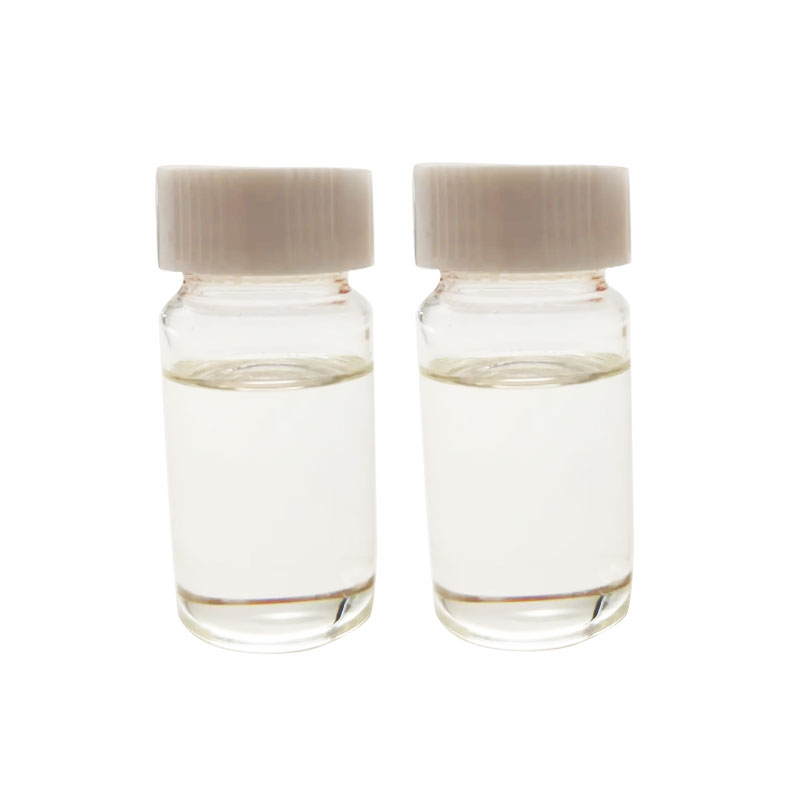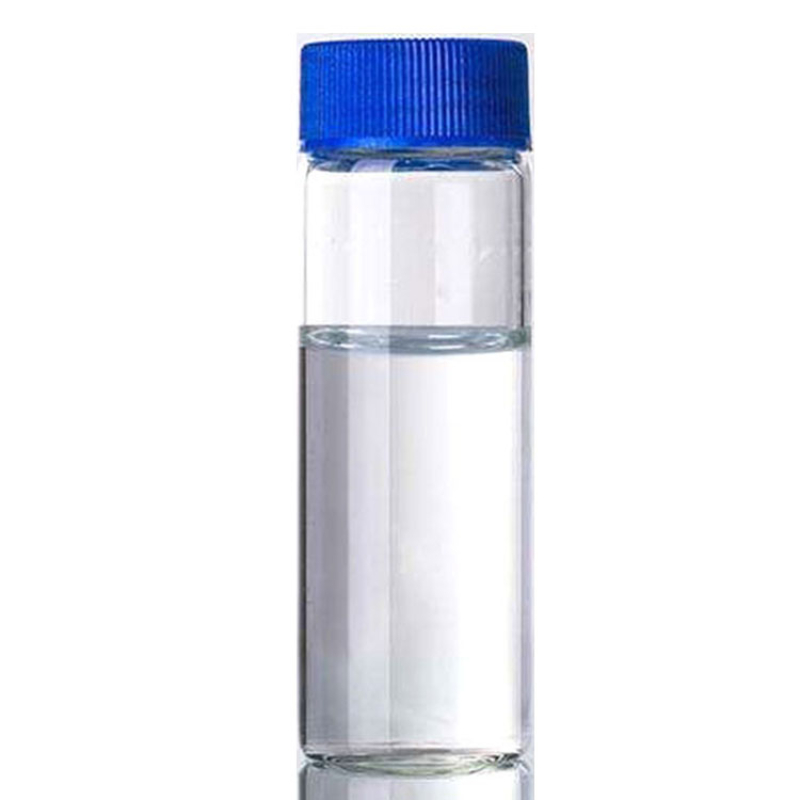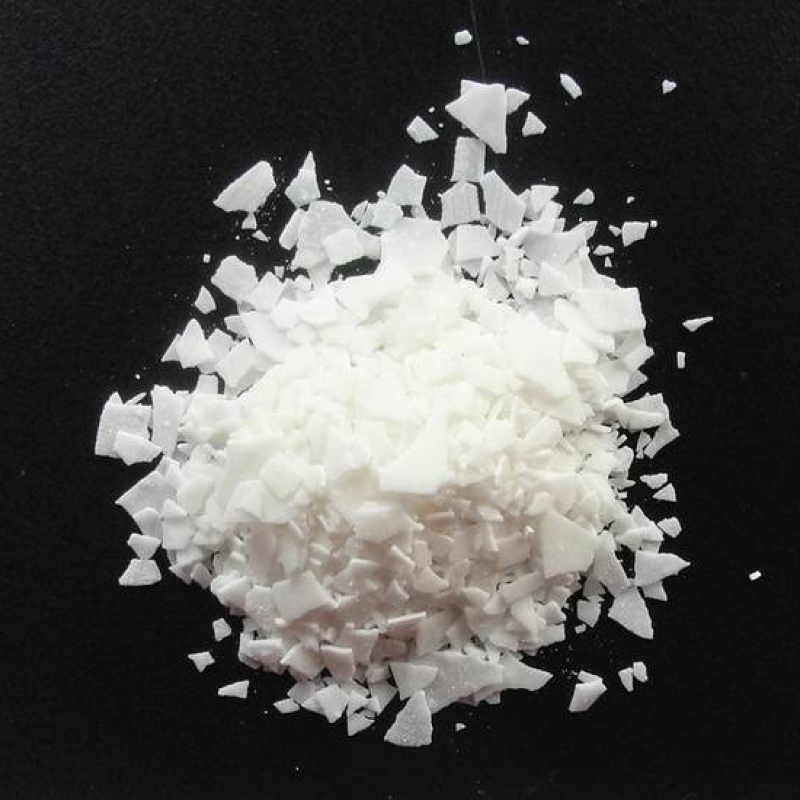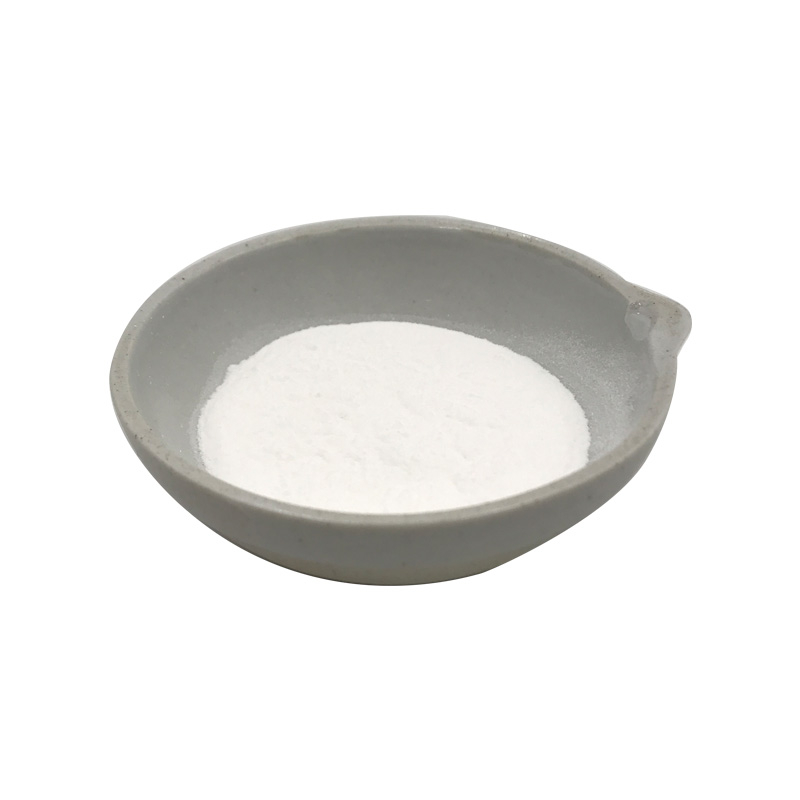Products Description of Polyisobutylene CAS#9003-27-4Polyisobutylene (PIB) is a non-toxic, water-white viscous liquid that exhibits excellent low-temperature flexibility due to its low glass transition temperature. It is a linear saturated polymer with a highly flexible molecular chain, which contributes to its superior elasticity and extensibility. PIB is recognized for its high chemical stability and can be tailored to various applications by adjusting its molecular weight, ranging from low to high molecular weights with viscosities varying from 5 to 4,700 cSt @ 100°C.
Contact Now
Poly(oxy-1,2-ethanediyl), .Alpha.-Hydro-.Omega.-Hydroxy-, Mono-C12-14-Alkyl Ethers, Phosphates CAS#68511-37-5The molecular structure contains polyoxyethylene segments, hydroxyl groups, C12-14 alkyl ether and phosphate groups. This unique structure enables it to have multiple properties. It has good surface activity, can reduce the surface tension of the liquid, and play the role of emulsification, dispersion and wetting at the interface.
Contact Now
Products Description of Cocamidopropyl betaine CAS#61789-40-0Cocamidopropyl betaine is a mixture, generally containing several main ingredients in different contents: decylamidopropyl betaine (abbreviated as C10), lauramidopropyl betaine (abbreviated as C12), myristamidopropyl betaine (abbreviated as C14), palmitamidopropyl betaine (abbreviated as C16), stearamidopropyl betaine (abbreviated as C18), etc.Cocamidopropyl betaine Chemical PropertiesBoiling point 104.3℃[at 101 325 Pa]vapor pressure 0Pa at 25℃storage temp. Refrigeratorsolubility Methanol (Sparingly), Water (
Contact Now
Products Description of Polyisobutylene CAS#9003-27-4Calcium phosphate tribasic (C3161) is plant cell culture tested (0.2 mg/ml) and is appropriate for use in plant cell culture experiments. Calcium phosphate tribasic is utilized to engineer new biomaterials for applications such as bone grafts and fillers. Si-substituted hydroxyapatite (Si-HAp) nanopowder can be incorporated in biodegradable polymer composites or deposited on biocompatible surfaces similar to pure HAp nanopowder (cat. no. 677418).
Contact Now
Products Description of Polyisobutylene CAS#9003-27-4Ammonium Chloride (CAS#12125-02-9) is a white crystalline salt that is highly soluble in water, with a solubility of 37.2 g/100 g at 20°C. It is a crucial component in agricultural fertilizers, providing essential nitrogen for plant growth. This compound is also used as a feed additive and in various industrial applications due to its versatility. In agriculture, Ammonium Chloride is valued for its ability to enhance soil fertility and promote robust plant development.
Contact Now
Products Description of Polyisobutylene CAS#9003-27-4Potassium sulfate (K2SO4) is a kind of chemical compounds that is commonly used in agriculture. The dominant application of potassium sulfate is as a fertilizer, which is commonly applied to offer both potassium and sulfur, thus improving the quality and yield of crops growing in soils that lack an adequate supply of this essential elements. Besides, the crude potassium sulfate is sometimes employed in the production of glass.
Contact Now
Products Description of 2,4-di-tert-butylphenol CAS#96-76-42,4-Di-tert-butylphenol widely exists in plants and is also an important intermediate for fine chemical products. It is mainly used to prepare co-antioxidant 168, and is also used to prepare polyisobutylene, polyamide, polycarbonate, etc.; it is still It can be used to produce antioxidant Chemicalbook (300, 314), ultraviolet absorber, light stabilizer 120, dyes and textile auxiliaries, and 2402 resin.
Contact Now
Products Description of PTBP CAS#98-54-44-tert-Butylphenol is a white crystalline solid under normal temperature and pressure. It is easily soluble in organic solvents such as ethanol, ether, and benzene, and is insoluble in water.
Contact Now
Triethylmethylammonium chloride Chemical PropertiesMelting point 282-284 °C (lit.)storage temp. Inert atmosphere,Room TemperatureWater Solubility Soluble in waterform Powdercolor White to Almost whiteBRN 3912434CAS DataBase Reference10052-47-8(CAS DataBase Reference)EPA Substance Registry SystemEthanaminium, N,N-diethyl-N-methyl-, chloride (10052-47-8)Safety InformationHazard Codes XiRisk Statements 36/37/38Safety Statements 26-36WGK Germany 3TSCA YesHS Code 29239000Factory and Equipment ShowFast delivery timeInventory 2-3 working day
Contact Now
Products Description of Bromobenzene CAS#108-86-1Bromobenzene is an organic compound with the chemical formula C6H5Br. It is a colorless oily liquid with the smell of benzene. Insoluble in water, soluble in most organic solvents such as methanol, ether, acetone, etc.
Contact Now
Products Description of Phenol CAS#108-95-2Phenol, with the chemical formula 𝐶6𝐻5𝑂𝐻C6H6O, is a white crystalline substance known for its versatility and reactivity due to the hydroxyl group attached to the benzene ring. It serves as a key precursor in the synthesis of pharmaceuticals, including aspirin, and is integral to the production of resins, plastics, and synthetic fibers like nylon. Phenol's historical use as a disinfectant highlights its ability to denature proteins and disrupt cell membranes. It also plays a role in the detergent industry and analytical chemistry.
Contact Now
Cyclohexanone CAS#108-94-1Cyclohexanone is a colorless, clear liquid with soil smell; its impure product seems as mild yellow color. It is miscible with numerous different solvents. without difficulty soluble in ethanol and ether. The decrease publicity restrict is 1.1% and the higher publicity restriction is 9.4%.
Contact Now
Products Description of Cyclohexanone 99.8%MIN CAS#108-94-1Cyclohexanone is an organic compound with the chemical formula C6H10O. It is a saturated cyclic ketone with a carbonyl carbon atom included in a six-membered ring. A colorless, clear liquid with an earthy odor and, when containing trace amounts of phenol, a minty odor. The impurities are light yellow and develop color as impurities are generated over the storage time. They are watery white to grayish yellow and have a strong pungent odor. When mixed with air the explosive pole is the same as an open chain saturated ketone.
Contact Now
Products Description of 2,5-Dimethyl-2,5-hexanediolCAS#110-03-2This product is white crystal, m.p.88.5~90℃, b.p.214~215℃, relative density 0.898, soluble in water, acid, alcohol, acetone, insoluble in benzene, carbon tetrachloride and other organic solvents2,5-Dimethyl-2,5-hexanediol Chemical PropertiesMelting point 86-90 °C (lit.)Boiling point 214-215 °C (lit.)density 0,898 g/cm3vapor pressure 0.18Pa at 20℃refractive index 1.4429 (estimate)Fp 126 °Cstorage temp. Keep in dark place,Sealed in dry,Room Temperaturepka15.07±0.29(Predicted)form Crystalli
Contact Now
Products Description of SuccinonitrileCAS#110-61-2White waxy crystals. Melting point 54-56℃, boiling point 265-267℃, 185℃ (8.0kPa), 158-160℃ (2.67kPa), relative density (60/4℃) 0.985, refractive index (nD60) 1.41734 (liquid), flash point 110℃. Soluble in acetone, chloroform, dioxane, slightly soluble in water, ethanol, ether, carbon disulfide and benzene.
Contact Now
Products Description of Isosorbide dimethyl ether CAS#5306-85-4 Isosorbide dimethyl ether is a colorless oily liquid. It is very stable under neutral conditions, hygroscopic, and miscible with many organic solvents. It is often used as a solvent. DMI can promote the penetration of active ingredients into the epidermis of the skin and give full play to the effectiveness of active ingredients.
Contact Now
Products Description of Pyridine hydrochloride CAS#628-13-7Pyridine, an organic compound, is a six-membered heterocyclic compound containing a nitrogen atom. It can be regarded as a compound in which one (CH) in the benzene molecule is replaced by N, so it is also called nitrogen benzene. It is a colorless or slightly yellow liquid with a foul odor. Pyridine and its homologues exist in bone tar, coal tar, coal gas, shale oil, and petroleum.
Contact Now
Products Description of Pyridine CAS#110-86-1Pyridine (molecular formula C6H5N) is a six-membered heterocyclic compound containing a nitrogen atom, that is, a compound generated by replacing a -CH= in a benzene molecule with nitrogen. It is similar to benzene, has the same electronic structure, and is still aromatic, so it is also called nitrogen benzene and nitrogen-benzene. It is a colorless liquid with a special odor at room temperature, with a melting point of -41.6℃ and a boiling point of 115.2℃. It forms an azeotropic mixture with water, and the boiling point is 92-93℃.
Contact Now
Products Description of 5-Bromo-8-nitroisoquinoline CAS#63927-23-1It is a light yellow solid powder at room temperature and pressure.
Contact Now
Products Description of 5-Bromo-4-chloro-7H-pyrrolo[2,3-d]pyrimidine CAS#22276-95-5 5-Bromo-4-chloro-7H-pyrrolo[2,3-d]pyrimidine belongs to nitrogen heterocyclic. 5-Bromo-4-chloro-7H-pyrrolo[2,3-d]pyrimidine Chemical PropertiesMelting point 221-225℃Boiling point 221.0±50.0 °C(Predicted)density 2.15±0.1 g/cm3(Predicted)storage temp. under inert gas (nitrogen or Argon) at 2-8°Cform solidpka9.43±0.20(Predicted)color YellowWater Solubility Slightly soluble in water.InChIKeyOXLMTRZWMHIZBY-UHFFFAOYSA-NCAS DataBase Refer
Contact Now
Products Description of POLY(METHYLSILSESQUIOXANE) CAS#68554-70-1White powderPOLY(METHYLSILSESQUIOXANE) Chemical Propertiesdensity 1,08 g/cm3refractive index 1.42Fp >121°Csolubility Insoluble in water.form SolidSpecific Gravity1.08color Clear. White.EPA Substance Registry SystemSilsesquioxanes, Me (68554-70-1)Safety InformationRisk Statements 36/37/38Safety Statements 26-36/37/39TSCA YesFactory and Equipment ShowFast delivery timeInventory 2-3 working days New production 7-10 working days
Contact Now
Products Description of Homopiperazine CAS#505-66-8Homopiperazine is a nitrogen-containing seven-membered ring compound and an important pharmaceutical intermediate. Most of its derivatives have strong biological activity and medicinal value and can be used to synthesize drugs such as homopiperazine hydrochloride, cyclizine, carbamazepine, quinolones and chlorcyclizine.
Contact Now
Products Description of Monoethanolamine CAS#141-43-52-Hydroxyethylamine, also known as ethanolamine, is an organic compound with the chemical formula C2H7NO.Monoethanolamine Chemical PropertiesMelting point 10-11 °C(lit.)Boiling point 170 °C(lit.)density 1.012 g/mL at 25 °C(lit.)vapor density 2.1 (vs air)vapor pressure 0.2 mm Hg ( 20 °C)refractive index n20/D 1.454(lit.)Fp 200 °Fstorage temp. Store at +15°C to +25°C.solubility Soluble in benzene, ether, carbon tetrachloride.pka9.5(at 25℃)form Liquidcolor
Contact Now
Products Description of 2-DODECEN-1-YLSUCCINIC ANHYDRIDE CAS#26544-38-7Yellow liquid2-DODECEN-1-YLSUCCINIC ANHYDRIDE Chemical PropertiesMelting point 41-43 °C(lit.)Boiling point 180-182 °C5 mm Hg(lit.)density 1.00 g/mL at 20 °Cvapor density 9.2 (vs air)vapor pressure <1 mm Hg ( 20 °C)refractive index 1.477-1.479Fp 352 °Fstorage temp. Inert atmosphere,Room Temperaturesolubility 10g/L in organic solvents at 20 ℃form clear liquid to cloudy liquidcolor Light yellow to Yellow to OrangeWater Solubility&
Contact Now





















![5-Bromo-4-chloro-7H-pyrrolo[2,3-d]pyrimidine CAS#22276-95-5](https://sdluxicdn.huazhi.cloud/cdn/ff/n6O11-kOusofVlIEkyt3B5Inja2bduAXUaMe-Ao7Yno/1717583115/public/styles/chanpinzhutu/public/2024-06/%E9%BB%84%E8%89%B2%E9%A2%97%E7%B2%92%20%281%29.jpg?itok=B5t5Y9hr)













